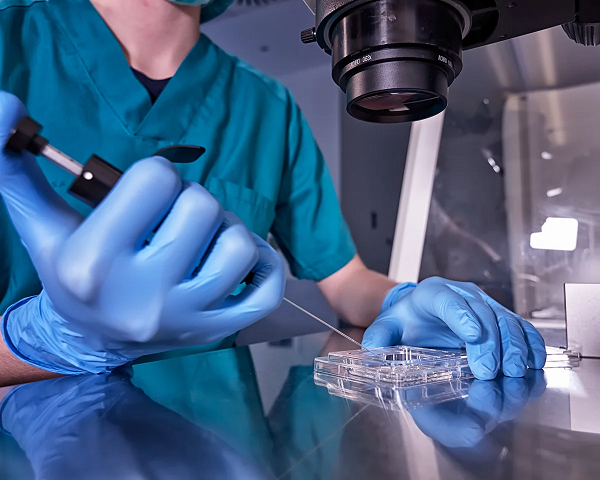Scientists are racing toward a remarkable goal: creating functional human sperm and eggs entirely in the lab from adult cells. While breakthroughs in animal models have already achieved success, researchers now say this could become a clinical reality for humans within five to ten years.
🎯 The Promise and the Process
Known as in‑vitro gametogenesis (IVG), this groundbreaking technique starts by reprogramming a person’s skin or blood cells into stem cells. These stem cells are then coaxed into forming germ cells—the building blocks of sperm or eggs—which are grown inside lab-created mini-organs, or organoids. In mice, researchers have successfully produced primitive sperm and ovarian tissue, demonstrating the potential for a full gamete creation system.
This achievement isn’t theoretical: leading teams—such as those at Osaka University under Professor Katsuhiko Hayashi, Kyoto University, and Conception Biosciences in California—have already created early-stage mouse gametes inside organoids. Some scientists forecast that adult human sperm and eggs produced in this way could occur in as little as seven years.
🔬 Why It Matters
-
Expanding Reproductive Options
IVG could transform fertility, offering pathways to biological parenthood for individuals facing infertility, same-sex couples, single parents, or those wishing to delay childbearing due to age. -
Addressing Demographic Challenges
With global birth rates in some regions declining, laboratory-generated gametes could rethink family planning and demographic strategies, potentially easing population decline. -
Advancing Therapeutic Medicine
Beyond fertility, IVG could contribute to regenerative medicine. Generating germ cells in the lab could yield new models for genetic diseases and drug screening tools.
⚠️ Challenges Still Ahead
This rapidly advancing field raises important safety and ethical concerns:
-
Genetic Integrity and Health Risks
Every step—reprogramming cells, converting them into germ cells, growing them to maturity—needs rigorous safety testing. Genetic anomalies or mutations during development could be passed on to future generations. -
Long‑Term Outcomes Uncertain
Although mice have been born using lab-created gametes, we need decades-long studies to confirm that such offspring remain healthy, fertile, and free of unintended consequences. -
Ethical and Societal Complexity
As the science progresses, tough questions arise: should same-sex or multi-parent gametes be allowed? How will gene-editing tools intersect with IVG? Regulations must balance innovation with careful oversight.
Regulatory bodies are already responding. Some countries explicitly ban lab-grown gametes in fertility treatments, while others are developing safety frameworks. But norms and guidelines must evolve alongside science.
🌱 What’s Next?
In the short term, scientists aim to refine and test the protocol for human cells. That involves perfecting organoid systems, ensuring genetic stability, and verifying full functional maturity. Labs and biotech companies are collaborating closely—combining academic curiosity with private investment to tackle technical and regulatory milestones.
In parallel, ethicists, lawmakers, and the public are engaging in a vital conversation. As the line between natural conception and lab assistance blurs, society must decide how to integrate these possibilities responsibly.
✅ A New Frontier in Reproduction
IVG represents a remarkable leap forward. It could one day allow any individual—regardless of fertility status, age, or gender—to create biological offspring. But the promise comes with heavy responsibility: ensuring safety, guarding against misuse, and building ethical frameworks that match scientific progress.
We stand at the cusp of a reproductive revolution. What happens next depends not just on lab breakthroughs, but on our collective wisdom as a society.
Feel free to enrich the article with diagrams that illustrate how stem cells become sperm or eggs, infographics showing the timeline to clinical use, or expert quotes to deepen reader trust.


